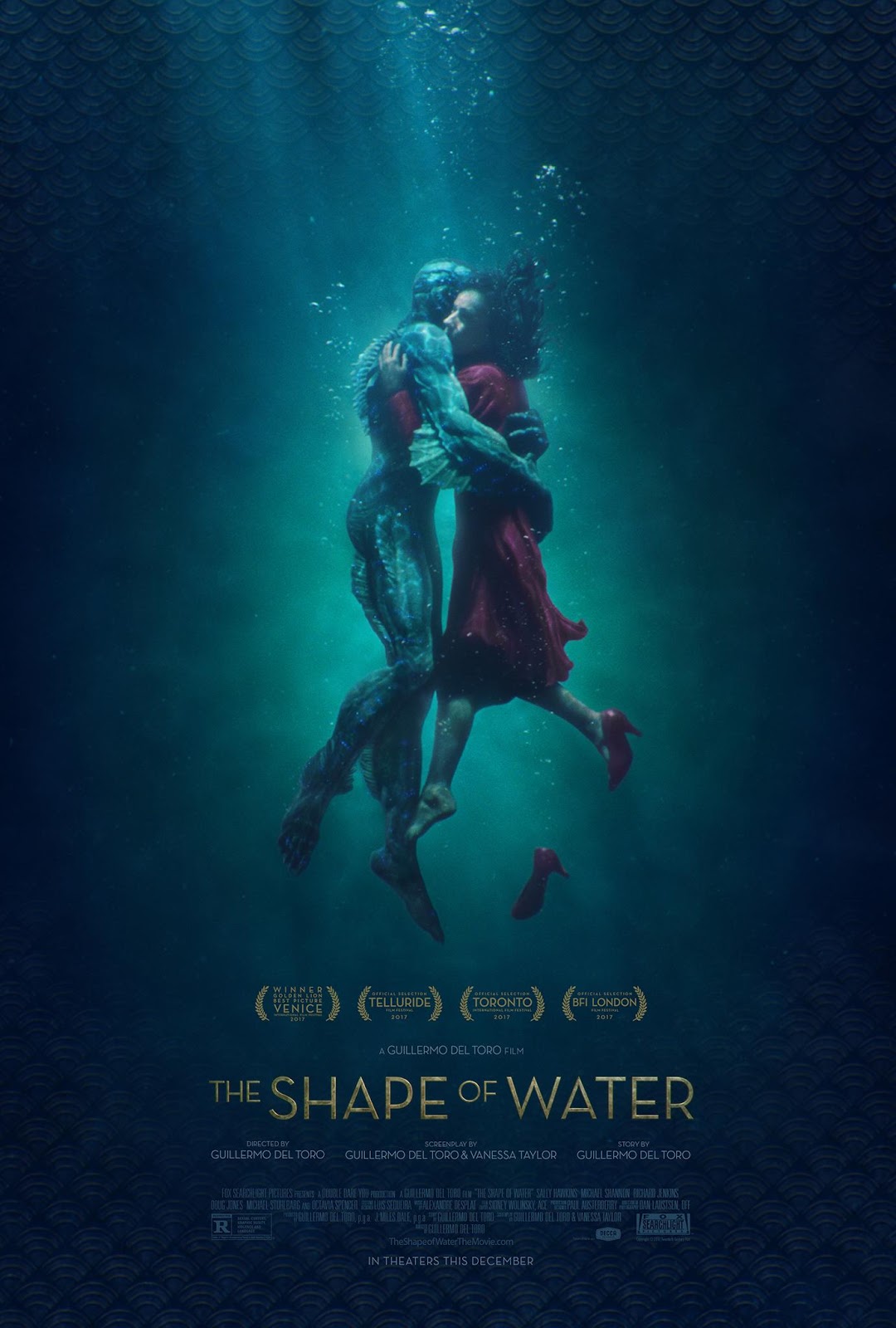From the gothic horror of Crimson Peak to the Transformers-style mayhem of Pacific Rim to the mind-bending fairytale of Pan’s Labyrinth, writer/director Guillermo del Toro has made it a point to keep his audiences guessing. The only constant in his work, it seems, is his devotion to the visual majesty of the finished project, and that continues with his latest, the stunning The Shape of Water.
As visually impeccable as it is, though, it doesn’t succeed quite as much as it should, feeling at times almost half-baked, as if del Toro had to cut a decent chunk of the film to keep it just at two hours. There’s not much in the way of subtlety and nuance on display in The Shape of Water, either; the conclusion is fairly well telegraphed, and it’s what keeps the film from becoming an unequivocal win. I wanted to be moved (and plenty of people have been, surely), but it just didn’t happen for me.
That’s not to say there still isn’t plenty to love about the film. From the ethereal underwater images that open the film through to the bookended finale, The Shape of Water is a treat for the eyes—a Cold War-era story that feels as authentic to the early ’60s as any film made at that time. And the performances from the extremely talented cast are worth every one of the accolades they’ve already earned.
Sally Hawkins stars as Elisa, a mute, night-shift cleaning woman at an underground government lab in Baltimore. Alongside her co-worker and interpreter Zelda (Octavia Spencer), she spends her time in a mundane rut, and her home life isn’t much better. A creature of habit, Elisa follows the same routine morning and night, and her seemingly only companion is Giles (Richard Jenkins), the kindly gent across the hall.
Her life is turned upside down one evening, though, when the mysterious and domineering Colonel Richard Strickland (Michael Shannon) brings a new “asset” into the lab, a gilled, walking sea monster reminiscent of the Creature from the Black Lagoon. Elisa and the creature form an instant bond, unbeknownst to the scientists, as she “teaches” him about everything from food to music, communicating with sign language. When she discovers the lab is going to kill the monster to study him, she jumps into action to try save him.
There is a myriad of subplots at play in The Shape of Water, including Giles’ closeted homosexuality, the racial strife of the era, and a bit involving covert Russian agents—none of which, surprisingly, amount to much in the grand scheme of things. It’s almost as though del Toro, who co-wrote the script with Vanessa Taylor (Hope Springs), inexplicably forgot about them all as quickly as he put them on paper.
There’s no denying the fact The Shape of Water is being hailed from all corners as a filmmaking triumph, and it has the awards and nominations to prove it, but as with La La Land last year, I’m not counting myself among those championing it. It’s not a travesty or a failure by any stretch, but there’s so much more of a movie that could have been made here than what ended up as the finished product.
Rating
3.5/5 stars
